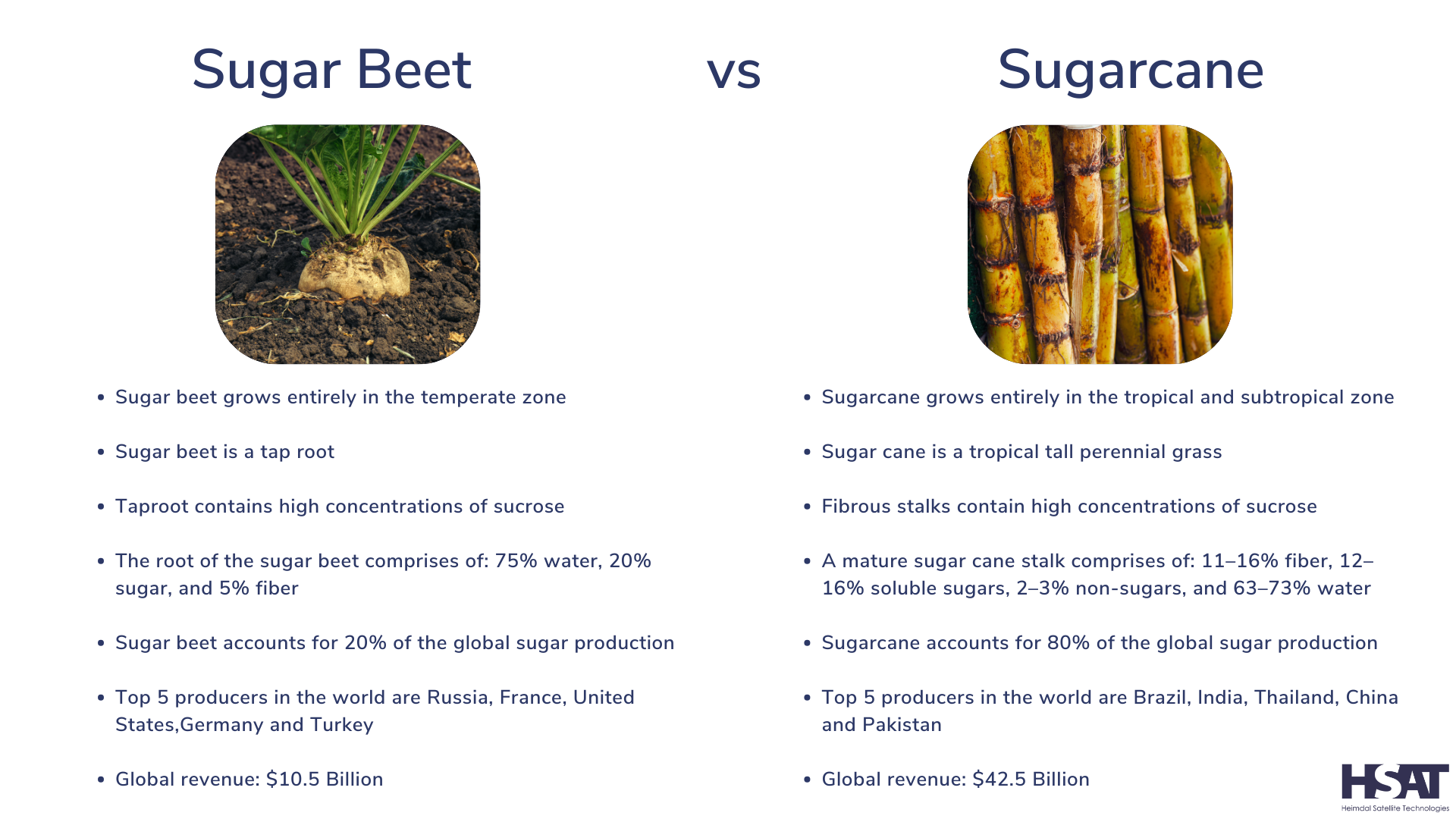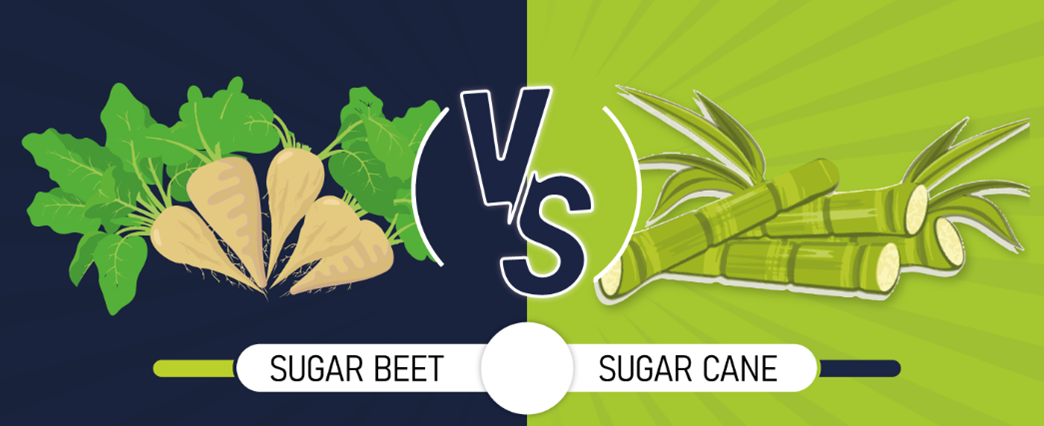Beet Sugar vs Cane: Which Sugar Source Is Better for Organic Products?
Beet Sugar vs Cane: Which Sugar Source Is Better for Organic Products?
Blog Article
Beetroot Sugar Vs Walking Stick: Discover the very best Option for Your Sweetening Requirements
The choice in between beet sugar and cane sugar prolongs beyond mere sweetness; it includes elements such as taste accounts, manufacturing approaches, and nutritional benefits. The natural touches of beetroot sugar might not enhance every recipe, whereas walking cane sugar is often favored for its tidy preference.
Review of Beetroot Sugar
Beet sugar, typically derived from the sugar beetroot plant, is regularly utilized as a vital sweetening agent in different foodstuff. The sugar beetroot, a biennial plant, grows in temperate climates and is mainly grown in regions such as Europe and The United States And copyright. beet sugar vs cane. The extraction process entails cutting the beets and extracting the juice, which is after that purified and taken shape to generate granulated sugar
One noteworthy quality of beet sugar is its chemical composition, which is virtually identical to that of walking cane sugar, as both are composed primarily of sucrose. This similarity enables beet sugar to be used reciprocally with walking stick sugar in dishes and food manufacturing.
Beetroot sugar is likewise noted for its flexibility in various applications, including baking, beverage formulation, and confectionery production. Furthermore, the beet sugar sector has actually made strides in lasting techniques, with many producers applying ecologically friendly farming approaches.

Summary of Walking Cane Sugar
Walking cane sugar, stemmed from the sugarcane plant, is just one of the most extensively acknowledged and utilized sugar worldwide. It is primarily made up of sucrose, a disaccharide that supplies a sweet taste profile crucial for various cooking applications. Walking cane sugar is typically located in granulated type but is also available as raw sugar, brown sugar, and powdered sugar, each offering unique functions in food preparation and cooking.
The farming of sugarcane is noticeable in exotic and subtropical regions, adding to its widespread accessibility. The plant thrives in warm environments, calling for adequate sunlight and water for optimal development. Walking cane sugar is typically valued for its all-natural production technique and very little processing, which preserves its flavor and dietary properties.
In enhancement to its culinary uses, walking cane sugar plays a considerable duty in the food market, offering as a preservative, fermentation substrate, and texturizing agent. Its convenience prolongs past food, finding applications in beverages, confections, and also cosmetics. With a lengthy background and a solid social existence, walking cane sugar continues to be a recommended selection for consumers seeking a natural sweetening alternative.
Manufacturing Processes Contrasted
When contrasting the manufacturing processes of beetroot sugar and walking cane sugar, it becomes clear that each approach mirrors the unique qualities of its resource material. Beetroot sugar manufacturing begins with gathering sugar beets, which are then washed, sliced, and subjected to warm water extraction to dissolve the sugar. The resulting juice undertakes filtration with liming and carbonation, adhered to by dissipation to focus the juice. Ultimately, crystallization takes place, yielding raw sugar, which is after that refined to create the end product.
On the other hand, walking stick sugar production entails harvesting sugarcane stalks, which are crushed to remove juice. This juice is then clarified using warm and lime, similar to the beetroot procedure. After clarification, the walking cane juice is evaporated and crystallized. The walking cane sugar procedure integrates a much longer milling and pressing stage, which aids in extracting maximum juice from the stalks.
Both processes highlight effectiveness, but the Recommended Reading methods highlight distinctions in tools and power use. Beetroot sugar has a tendency to have a much more simple processing course, while cane sugar manufacturing can be much more complex because of the fibrous nature of the walking stick stalks. Ultimately, these distinctions shape the qualities of the sugars generated.
Nutritional Profiles and Advantages
Sugar, a staple in many diet regimens, differs in nutritional profiles and advantages depending upon its resource. Both beet sugar and cane sugar mostly are composed of sucrose, providing similar calorie web content-- approximately 4 calories per gram. Refined differences can impact consumer selections and understandings.
Beet sugar is obtained from sugar beetroots, which have small quantities of vitamins and minerals, such as potassium and calcium, yet these nutrients are existing in minimal quantities when eaten in normal amounts. Conversely, cane sugar, extracted from sugarcane, may use similar trace nutrients, yet the distinctions are marginal and largely insignificant in the context of a well balanced diet plan.
One significant element is the environmental effect of each source, which can indirectly influence dietary options. Beetroot sugar manufacturing is frequently seen as even more lasting due to reduced water usage compared to walking cane sugar farming. In addition, some individuals prefer beet sugar as a result of its non-GMO condition in particular regions, possibly aligning with health-conscious consumer fads.

Flavor Distinctions and Uses
Distinct taste profiles identify beetroot sugar and walking stick sugar, influencing their applications in different cooking contexts. Beet more helpful hints sugar has a slightly earthy taste, which can be connected to the soil in which the beetroots are grown.
In useful terms, beetroot sugar and cane sugar can normally be made use of mutually in many dishes. Nonetheless, pastry cooks and culinary experts commonly lean towards walking cane sugar for its superior capability to caramelize, which is important in creating intricate flavor accounts in confections and sauces. Furthermore, walking cane sugar is preferred in drinks, as its taste liquifies perfectly, keeping the honesty of the beverage.
Inevitably, the selection between beetroot and walking cane sugar might come down to individual choice and the details needs of the dish, with each kind offering distinct attributes that can enhance the cooking experience.
Conclusion
In summary, the option in between beet sugar and cane sugar pivots on particular cooking applications and personal wellness considerations. While beet sugar offers a somewhat earthy taste and lasting manufacturing advantages, visit this page walking cane sugar's cleaner sweet taste is often liked in baking and delicate recipes. Examining the production procedures, dietary accounts, and taste distinctions can direct customers in picking one of the most ideal sweetener for their requirements, making certain both taste complete satisfaction and placement with nutritional preferences.
Beet sugar, frequently derived from the sugar beet plant, is frequently made use of as a key sweetening agent in numerous food items. Walking cane sugar is generally found in granulated kind but is also offered as raw sugar, brown sugar, and powdered sugar, each offering distinct objectives in cooking and cooking.
When contrasting the production processes of beet sugar and walking cane sugar, it ends up being clear that each approach shows the special features of its resource material. Beetroot sugar manufacturing starts with gathering sugar beetroots, which are then cleaned, cut, and subjected to warm water extraction to dissolve the sugar. Beet sugar often tends to have an extra simple processing course, while walking cane sugar production can be much more complicated due to the fibrous nature of the cane stalks.
Report this page